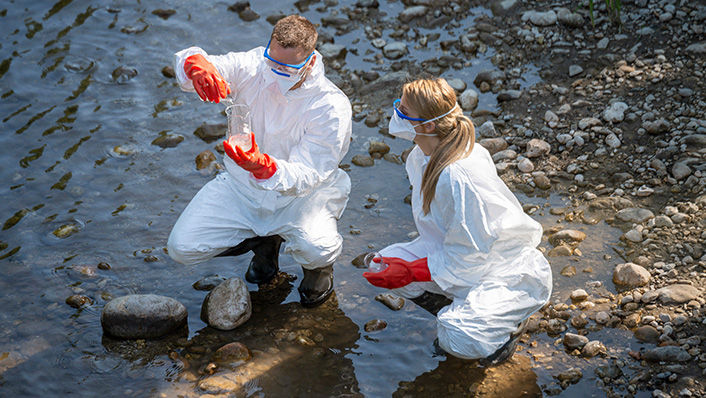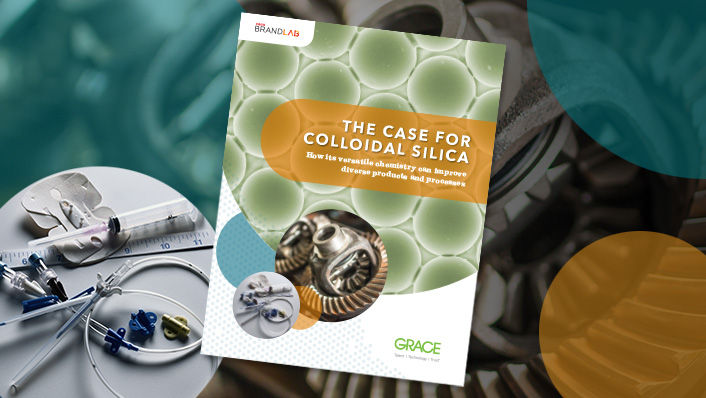Colloidal Silica Can Help Expedite Water Sample Analysis of Toxic Pesticides

Cellular sentinels monitor water contamination
The first step in improving water quality is often identifying which contaminants are polluting a specific water body. Assessing the contamination typically is a time-consuming process in which water samples are collected and then sent off to a laboratory for further analysis. But a strategy developed by researchers in France and Argentina could allow such determinations to be made on the spot, with insights derived from particular microorganisms trapped in colloidal silica cages.
Claude Durrieu of the University of Lyon is an algae expert. Her team has identified a number of species of these single-celled aquatic organisms that are vulnerable to common agricultural herbicides and pesticides. Durrieu sought to exploit this characteristic as the foundation for a living chemical sensor, so she teamed up with Sara Bilmes of the University of Buenos Aires, a materials scientist who works extensively with nanoparticles.
Colloidal silica is chemically stable and biocompatible…the cells survive because the silica [structure] has porosity, so that nutrients can go in and all the excretory products can go out.
Materials Scientist, University of Buenos Aires
Their idea was to embed algae in synthetic capsules that allow the living cells to interact with their environment for extended periods. Bilmes found that LUDOX® colloidal silica served as a useful building block for the capsules. Her team developed a strategy for encasing small numbers of cells in tiny hydrogel bubbles. “Colloidal silica is chemically stable and biocompatible,” Bilmes says. The cells “survive because the silica [structure] has porosity, so that nutrients can go in and all the excretory products can go out.”
Colloidal silica is a highly pure form of silicon dioxide, the same substance which forms sand. Many decades of use and data from numerous studies have indicated that silicon dioxide has no adverse effect on the environment and has a low potential for adverse effects on public health.
In an initial demonstration in 2012, Bilmes and Durrieu worked with a trio of chemically sensitive algae. Exposure to commonly used weed-killing compounds such as atrazine disrupts the photosynthetic process in these algae, producing a change in the algae's chlorophyll content that can be detected with a fluorescence-based sensor. Having confirmed that they could detect low levels of atrazine with these algae-based biosensors in laboratory experiments, the researchers followed up in 2016 with a more real-world test in which they demonstrated the feasibility of detecting contaminating chemicals in rainwater collected from industrial and agricultural sites in France.
Bilmes notes that these encapsulated algae can be left in water for extended periods, surviving 3 months or more if adequate nutrients are available—even in the presence of toxic chemicals. “If not all the algae are dead or dying, you can put them in nutrient solution and they recover and reach a population that is again suitable for detection of pesticides,” she says. Most importantly, testing no longer requires a separate trip to the lab: Bilmes says her team has developed a handheld device that uses a fiber-optic detector to directly collect fluorescence readings on-site.
The silica encapsulation approach has also proved versatile for other aspects of environmental protection. For example, Bilmes and her colleagues have encapsulated fungal cells that secrete chemical-degrading enzymes that pass through the pores of the capsule, potentially helping to break down surrounding pollutants. “It’s a perfect system for many applications,” Bilmes says.
Featured
General Industrial
Grace's expertise in applying innovative technologies to base materials such as silica and alumina transform them into functional ingredients such as silica gels, silica sols, precipitated silica, zeolitic molecular sieves, and modified silica products that impart a range of beneficial properties to industrial products.
LUDOX® Colloidal Silica
LUDOX® colloidal silicas are discrete nanoscale spherical particles of amorphous silica dispersed in water.


